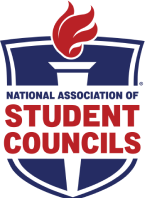- How Does it Work?
Through a series of three school-wide summits, usually held in classrooms—students gather to share their observations of community issues, their recommendations for improvements, and a framework for how to put those recommendations into action.
The summits look like this:
Summit 1: Voice
Following predetermined ground rules to establish a safe, orderly environment, students convene in smaller groups to discuss and prioritize the community issues they feel need attention. The summit concludes when the groups give their lists to the RSVP student leadership team, who then determines the top issues to share with the principal as the focus of the next summit.Summit 2: Recommendations for Action
Here, all students are presented with the top three issues that were identified by multiple groups from the first summit and are asked to recommend actions to address them. The student leadership team considers the discussions and determines which recommendations will be included in the Civic Action Plan outlined in the final summit.Summit 3: Response and Implementation
Students are now presented with an initial draft of the Civic Action Plan and asked for ways it can be improved, as well as what roles might be required and who will fill them. Then, the student leadership team applies the feedback to create the final version Civic Action Plan.With the summits completed and the Civic Action Plan approved by the principal, the student leadership team identifies potential obstacles, allies, stakeholders, and support so that they may bring their plan to fruition. They can establish contacts, secure commitments, form subcommittees, secure resources, and more—all to get started on tackling the community issue at hand.
As projects within the Civic Action Plan are completed, it’s time to celebrate success.
- Why should RSVP come to your school?
With the summits completed and the Civic Action Plan approved by the principal, the student leadership team identifies potential obstacles, allies, stakeholders, and support so that they may bring their plan to fruition. They can establish contacts, secure commitments, form subcommittees, secure resources, and more—all to get started on tackling the community issue at hand.
- The Outcome
With the summits completed and the Civic Action Plan approved by the principal, the student leadership team identifies potential obstacles, allies, stakeholders, and support so that they may bring their plan to fruition. They can establish contacts, secure commitments, form subcommittees, secure resources, and more—all to get started on tackling the community issue at hand.
